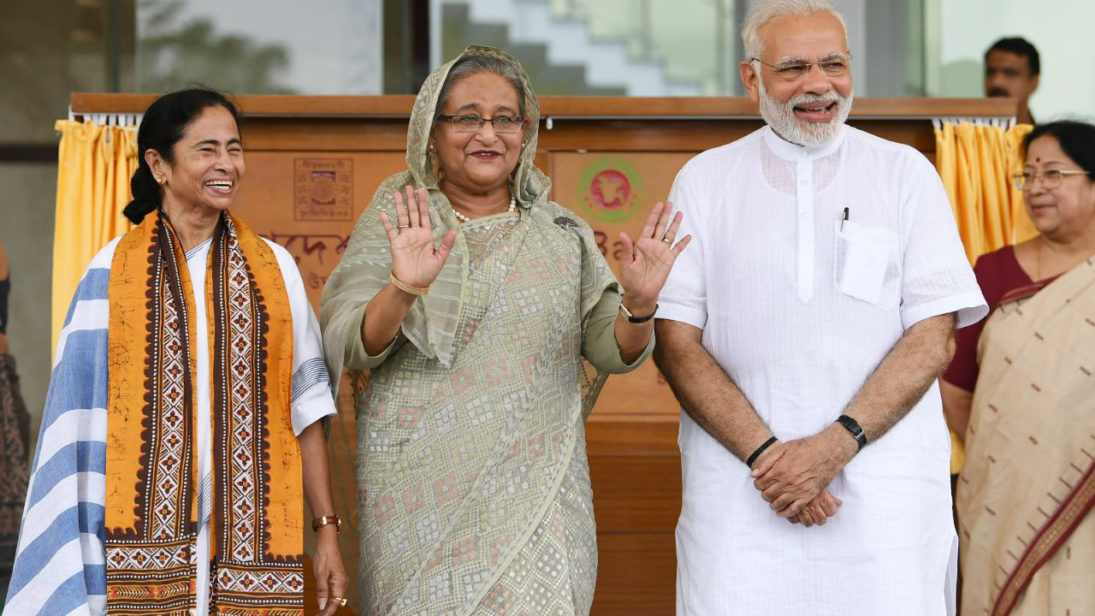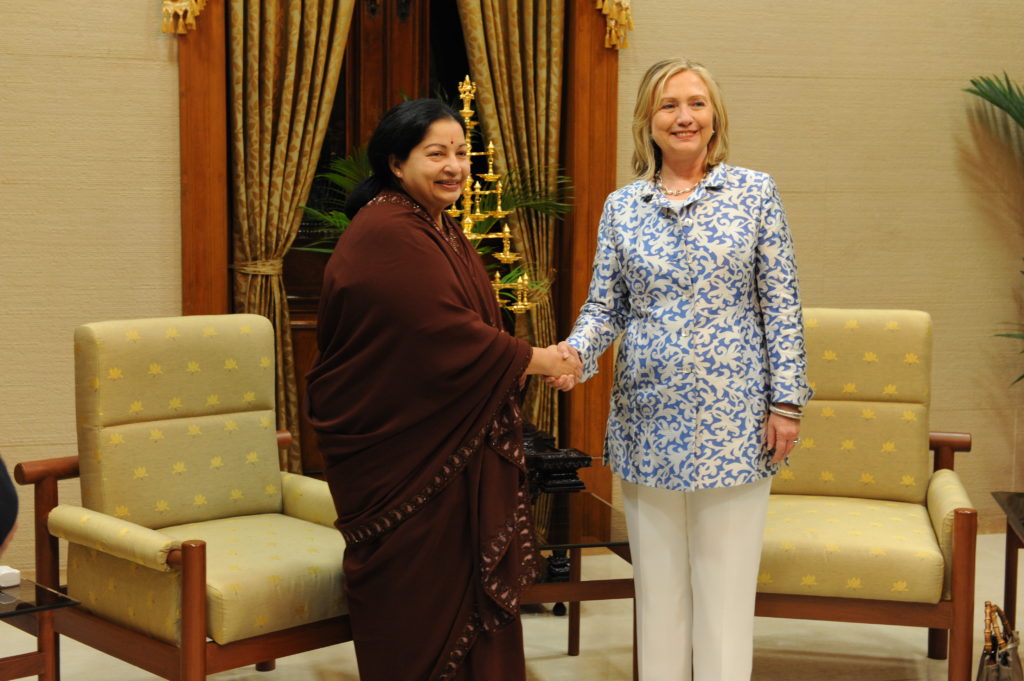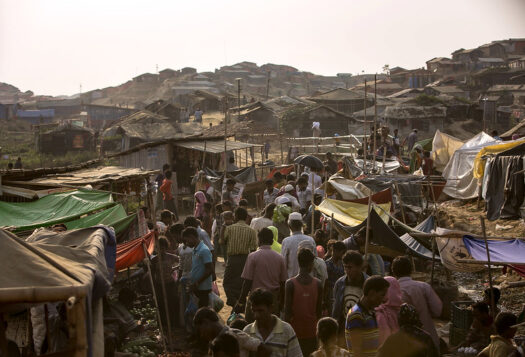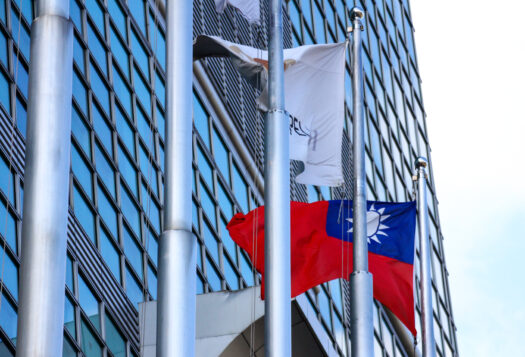
In 2012, the Italian defense minister met the chief minister of the Indian state of Kerala requesting him to allow the trial of two Italian marines in Rome who were allegedly caught killing fishermen from Kerala in Indian waters. Kerala chose not to cooperate, and subsequently, Italy blocked India’s accession to the elite Missile Technology Control Regime, preventing India from accessing drone technology. New Delhi was stuck between popular opinion in Kerala and its strategic needs. This was not the first time a state constrained India’s foreign policymaking.
Despite adopting a federal polity with governance powers divided between the Union of India and the constituent states (regions), the Indian constitution does not envisage a role for states in foreign policy. To demarcate powers and duties, the Seventh Schedule of the Indian constitution apportions subjects in three lists—the Union List, the State List, and the Concurrent List. Foreign relations is the exclusive domain of the union government, which stands beyond judicial scrutiny like most common law jurisdictions. The constitution grants absolute legislative powers to the parliament to this end while outlining some non-justiciable directives such as resolving international disputes by peaceful arbitration.
However, despite this clear delineation, states are becoming increasingly relevant in New Delhi’s policy choices—so much so that the Ministry of External Affairs established a States Division in 2014. With increasing resources at their disposal and internal competition, states in India are inevitably bound to play a larger role in three areas—border disputes, cultural and diaspora ties, and foreign investment. Where interests converge, New Delhi and regional governments can do more to chalk out strategies and mechanisms to work in tandem to produce optimum policy outcomes that use both the tools of the states and the federal government.
The MEA’s States Division
In 2014, the MEA established the States Division to facilitate state efforts in promoting cultural and commercial diplomacy. This indicates an evolution of institutional thinking in India towards seeing states as partners in promoting national and regional interests, even though at this stage vexed policy issues such as the Teesta Accord disagreement between West Bengal and New Delhi are kept out of the new division’s remit.
To foster external linkages, the MEA has mandated its foreign service officers specialize in at least two states of India and is also working towards increasing foreign envoys’ exposure to India’s regional strengths through its “Meet the States” initiative. The division is also meant to support states as a single window for routine consular and political affairs such as travel arrangements of regional leaders or formalizing sister city arrangements.
Where interests converge, New Delhi and regional governments can do more to chalk out strategies and mechanisms to work in tandem to produce optimum policy outcomes that use both the tools of the states and the federal government.
While the creation of the States Division is a nascent and welcome move, states have yet to exploit the MEA’s endeavor. For instance, most regional governments’ tourism boards run promotions in foreign countries without taking adequate inputs from States Division. Seeking inputs about local geography and popular preferences from States Division and Indian missions can enhance their returns on tourism and foreign investment initiatives.
States and Foreign Policy
States may attempt to sway a range of foreign policy issues in India, in a way that is not always in sync with national priorities and can occasionally lead to suboptimal policy outcomes as mentioned earlier in the case of Kerala and Italy. Of all issues, border disputes, cultural and diaspora, and foreign investments frequently feature in center-state dynamics.
Presently, India has some form of territorial dispute or pending demarcation with most of its neighbors except Bhutan. In dealing with neighboring countries, New Delhi must accommodate popular and political sentiments. For example, in the case of Nepal, families are spread across both sides of the open border where free movement is permitted. In responding to any upheaval in ties, as recently seen by former Nepali premier KP Oli’s unilateral redrawing of maps, New Delhi must be mindful of cross-border familial ties and livelihoods of border communities. While these pertain to smaller groups, sometimes issues acquire higher political salience that the Indian government cannot escape as in the case of Tamil Nadu or West Bengal, which have issues with Sri Lanka and Bangladesh respectively. Both states have significant parliamentary seats, and often the ruling coalition in New Delhi relies on their support. For instance, Tamil Nadu is a coastal state sharing an undefined maritime border with Sri Lanka that witnesses the perpetual challenge of fishermen moving into undemarcated waters and getting apprehended or killed. This happens regularly around Palk Strait and the Katchatheevu island, which was ceded Sri Lanka by the Indira Gandhi administration in 1974 against the will of Tamilian people. With the historical baggage of Tamil resistance to the Sri Lankan state through insurgency, the issue acquires a greater ethnonationalist tone beyond a few aggrieved families of fisherman serving sentences. These contentious issues are a regular feature in elections with regional politicians blaming New Delhi for not doing enough. The Indian government is caught between Tamil sentiments and Sri Lankan Navy’s assertion to apprehend boats transgressing their waters.

The other two domains of culture/diaspora and attracting foreign investment are not as contentious, and usually, state and central government’s interests converge. However, good public acts may become a race for credits between the two governments if they are ruled by different parties. Some foreign countries have a higher concentration of expats from a particular Indian region. For example, Keralites in the Gulf, Punjabis in Canada, Biharis in Mauritius, Gujaratis in the United States and the United Kingdom, etc. With nearly 13.5 million Non-resident Indians (NRIs) residing in 210 countries, expats have become a political and economic force to reckon with for New Delhi as well as regional capitals. Even foreign dignitaries visiting India make a stop in these regions. Narendra Modi’s unusual emphasis on diaspora outreach not only helps him build his brand but also helps his party in penetrating newer regions politically. Expats are both political patrons and investors in their home states. Many regional governments have an NRI Cell, NRI Department, or NRI policy to facilitate investments and redress grievances. Expats interested in returning to their roots are important tourists to places of religious and cultural significance. The inbound remittances and heritage tourism support both states as well as the center. However, when NRIs are in trouble due to an outbreak of violence or natural calamity in host countries, both state and central governments have to play a collective role in their repatriation. India has conducted more than 30 evacuation missions between 1990 and 2017 to bring home some 110,000 citizens. Most recently, in the Afghanistan crisis, state NRI cells are seen coordinating with the local population and the MEA for the successful evacuation of its citizens.
With nearly 13.5 million Non-resident Indians (NRIs) residing in 210 countries, expats have become a political economic force to reckon with for New Delhi as well as regional capitals.
Another area is the competition between states in attracting foreign tourists and investment. Bringing foreign investments played a big role in Narendra Modi’s rise as Gujarat’s chief minister and created a new sense of competition among states. While the central government through the MEA, Investment Promotion Board, and other relevant ministries usually support most proactive regional governments leaving aside politics, it can do better in helping developing states by encouraging and guiding their efforts in attracting investments in labor-intensive sectors that can help them alleviate mass poverty. Both the center and the states should also bring an early resolution to the Center-State Investment Agreement (CSIA) issue. Announced in the 2016 Budget, CSIA is an arrangement between the center and the states that allows better coordination on foreign direct investment including compliance with India’s international agreements. It is a “carrot and stick” mechanism for the states by New Delhi wherein those states who legally bind themselves to New Delhi’s international commitments would be looked upon favorably, whereas others would not enjoy similar treatment. The most contentious clause in the center-state accord is the one that allows New Delhi to deduct dues from reneged international commitments by the states from their share of the revenue. The agreement or its clauses are not forced upon states currently, but an early uniform agreement in line with India’s international commitment is preferable over the current lack of policy.
The Way Ahead
With the historic rise in states’ share of funds from 32 to 42 percent as suggested in the 14th Finance Commission of India, regional governments are becoming fiscally wealthier and politically assertive. There is a simultaneous increase in the realization that NRIs can be leveraged for prestige and politics. In what can be called competitive federalism, states want to reach out to foreigners to attract tourists and investment independent of New Delhi’s efforts.
Any and all efforts by the states are a win-win for the national government as well. Apart from traditional friction points involving neighbors, New Delhi should support and harness state efforts to attract tourism and investment wholeheartedly, while states should not hesitate from using the MEA’s expertise, even if they are political rivals. If such policy harmony could be created by expanding the remit of States Division and involving local missions, there is much the states and the center can achieve collectively.
Editor’s Note: This article is part of a joint-series run with 9DashLine exploring the role of subnational diplomacy in South Asia.
***
Image 1: Prime Minister’s Office, Government of India via Wikimedia Commons


